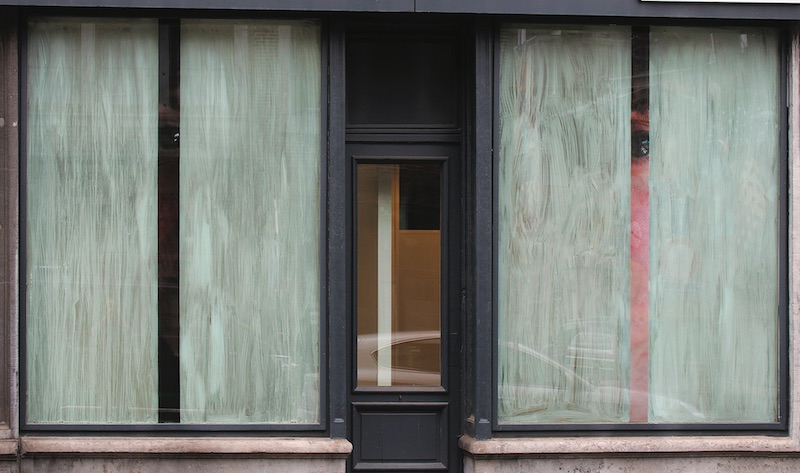-
The price is worth it
Acher
Boulevard d'Avroy 28-30
-
TO DO
Hilal Aydoğdu
100 Rue Saint-Gilles
-
V – 150360/1 p. 204, 265, 266
Dóra Benyó
1 Féronstrée
-
Fausse bonne nouvelle
Juan d’Oultremont
31b Rue de la Cathédrale
-
Et fouisse toujours on trouvera bien
Gaspard Husson
18 Rue de l'Etuve
-
La constellation du navire Argo
Sarah Illouz & Marius Escande
Hôtel de la Cour de Londres 40 Rue Hors-Château
-
One Line (… Better Than On – line!)
Marin Kasimir
31a Rue de la Cathédrale
-
Cityscape
Sarah Lauwers
29 Rue de l'Université
-
Traversées
Alexiane Le Roy
3 Rue de la Cathédrale
-
Mécanique d’un mur
Raphaël Maman
9 Passage Lemonnier
-
Vapeurs
Eva Mancuso
5 Rue Chéravoie
-
Don’t cry over spilllllled tears anymore
Francisca Markus
7 Rue Saint-Remy
-
Actions !
Maxence Mathieu
56 Rue Saint-Gilles
-
On ne peut rien faire d’autre que tenir debout
Élodie Merland
113 Rue de la Cathédrale
-
Travel Local, Buy Local
Oya
107 Féronstrée
-
Le vestiaire
Camille Peyré
85 Rue de la Cathédrale
-
22 empans et 1 palme
Leïla Pile
75 Rue Hors-Château
-
Chronique florale
Ionut Popa
101 Féronstrée
-
The Sunken Place
Louise Rauschenbach
4 Rue de la Cathédrale
-
Le temps d’une trace / La trace du temps
Florian Schaff Marvyn Brusson
1 Rue Courtois
-
Open closet archive 1995/2021/2023/2024
Bo Stokkermans
Passage Lemonnier, 37-39
-
Mutations x Urbaines
Adrien Mans Benjamin Ooms
17 Rue des Croisiers
-
Je m’organise…
Leen Vandierendonck
159 Féronstrée
-
Wer rettet die Welt
Paul Waak
16 Rue du Palais
-
Regarde… ce qu’il se passe à côté
Sculpture/Peinture B3 ESA Liège Melissa Andreia Alves ...
137-139 Féronstrée
-
Pauvre petit belge qui tremble
Paolo Gasparotto
25 Rue Saint Paul
Warning: Undefined array key "current_expo" in /var/www/clients/client3/web4/web/wp-content/themes/artaucentre/loop/vitrine.php on line 25

PEEPING TOM
#1
Mohammed Alani
Curator: Philippe Braem
1159 En Féronstrée
It has been almost five years since we first met. I was preparing at the time, for the Venice Biennale, the Pavilion of Iraq, the country where you were born. The meeting was more than just a workshop visit. In a space locate somewhere in Forest, a sort of empty garage, you had prepared a small exhibition. You thought it was important that I could physically experience your work, instead of showing me a series of photos on your computer screen. The meeting was a real invitation to observe, to feel a transformation, to play a game. And this game, we call it art. It is therefore essential to look at the capacity to give, through the imagination, another meaning to things. The cap of a water bottle can easily become a city for a child. A tree branch can even turn into a bus. As an artist, you play, of course, but seriously, after having thought about it and weighed it well. What most of us throw and throw away becomes the raw material for your artwork. And just like Picasso, who put together a saddle and handlebars on a bicycle to create an assembly, you put things together by connecting them to each other, juxtaposing them, tying them temporarily. Each artwork is like an idea, a photo that has not yet been taken, an impulse or a thought. It shows us where to look, invites us to connect form and space. Moreover, the spectator often becomes part, protagonist, accomplice, especially in performances. The spectator becomes a carrier, a base, and therefore sees himself reduced to a simple object. The moments are modeled in the image of a sculptor who shapes a face in clay. Mohammed Alani borrows or quotes not only visible elements of recent art history, but also principles that he overturns. Nevertheless, Mohammed Alani is above all an artist who, intuitively, constructs images that enhance the banality of everyday life with playful simplicity.
